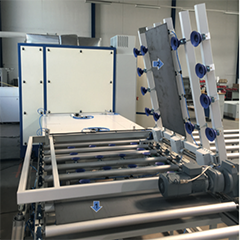In this day and age recycling should be a top priority throughout the renewable energies sector. Dr. Palitzsch from Loser Chemie GmbH, reminds PES readers about the latest update to the EU waste legislation. It’s remarkable to see how it is possible to achieve total recovery of all materials, in both thin-film PV and silicon-based modules.
According to the latest revision of the EU waste legislation (WEEE), producers of solar photovoltaic panels are responsible for the disposal and recycling of the modules they sell in EU Member States. In addition to this we also have a few other reasons to recycle all and any used materials.
Recycling allows the materials, in otherwise one-use products, to go on to become something new and saves resources involved in sourcing new materials: that´s why it is amazing. And the best way is, of course, the complete recovery of all components.
In recent years, Loser Chemie GmbH has led the search for a universal concept, for as many solar module types as possible. Today, the company has introduced a technology that enables the recycling of both thin-film PV and silicon-based modules. An important role is played by light and water. Used correctly complete disassembly of old solar modules, into their individual components, is now possible.
First of all, the application of optical technologies means the sandwich structure is easy to open and the glass panels do not have to be destroyed.
This is important, because the price for recycling depends primarily on how much money can be generated for secondary raw material glass. This is also the decisive criterion for the choice of recycling. Usually two different grades of glass are used in one thin film photovoltaic module – front glass and rear glass (see Fig. 1). The front glass is of high quality, because it is also contains no iron. It is obvious, that a pure-grade secondary material of front glass has a higher value than the ferrous back glass.
Contrary to conventional technologies, like shredding, we do not break the glass. By using technologies from the field of optical nanotechnology it is possible to open fully the sandwich structure, without damaging the glass.
To clean the glass panels we use alkane sulfonic acids, which without fail can extract all photoactive layers from several metals, in a very short reaction time. Our hydrometallurgical extraction operates at room temperature and the used alkane sulfonic acid is totally biodegradable (OECD 301 A). As a result, sorted pure glass is obtained (see Fig. 2).
If necessary, it is even possible to pull off the plastic film immediately after the wet-chemical treatment of the rear glass.


























